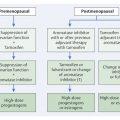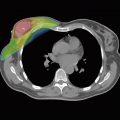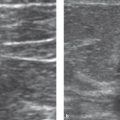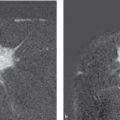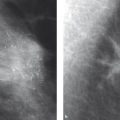Compliance
Carcinoma of the breast is the most common tumor affecting women in the western world. Many people have friends or relatives who have had breast cancer.
Modern breast diagnosis and treatment includes a multiplicity of well-differentiated and effective diagnostic and therapeutic procedures. These procedures can only be fully effective if, after receiving a comprehensive explanation based on an honest, cooperative, and trusting relationship with her doctor, the patient understands, endorses, and actively supports them (compliance). The following factors contribute to patient satisfaction:
Quality of the medical services.
General and personal requirements.
Structural, organizational, and procedural components.
Interactive and communicative competence.
16.1.1 Quality of the Medical Services
High-quality medical services form the basis for a trusting and long-lasting doctor–patient relationship and are presumed and expected by the patient as a matter of course. Lack of quality care leads to dissatisfaction and has negative impacts.
16.1.2 General and Personal Requirements
Breast diagnostics are characterized by particular features over which the examiner has little or no control:
The patient population is (almost) exclusively female.
Patients are frequently well-informed beforehand as a result of personal experience and reports from friends and relatives, the internet, and other media. The quality of this information varies considerably.
Many patients find the examination to be anxiety provoking or uncomfortable; women’s personal attitudes toward mammography are strongly influenced by their overall views of their own personal environment. 21
The examination requires close physical contact between the radiologic technologist or doctor and the patient.
Over the course of time, a personal relationship develops between the patient and the mammography team.
16.1.3 Structural, Organizational, and Procedural Components
Patient satisfaction is also influenced by nonmedical factors, such as:
Telephone accessibility.
Promptness of appointment scheduling.
Parking facilities.
Waiting times.
The arrangement of the waiting areas, examination rooms, and sanitary facilities.
Protection of patient privacy and personal space.
Response to individual needs when performing the examination.
Patients can discern poor cooperation and communications between team members and inadequate organization within the examination procedure. This leads to dissatisfaction and can diminish compliance. Anxious patients become more insecure. 16
16.1.4 Interactive and Communicative Competence
Interactive and communicative competence is demonstrated by:
Friendliness of the staff.
Addressing the patients personally.
Making explanations understandable to the patient.
Responding to individual needs when performing the examination.
The timeliness and manner with which results of tests are shared with the patient.
Making the patient aware of further diagnostic and therapeutic options.
In most diagnostic breast centers, the patient is given the results immediately after the examination. Sharing the results with the patient, especially if there are abnormal findings, places a high demand on the doctor’s communication ability, social skills, and empathy.
16.2 Communication
Although the examination team members will make every effort to communicate successfully with the patient, multiple factors can interfere with the daily clinical routine. These include both external factors, such as time pressures, the obligation to be cost-effective, and focusing on technical details, as well as internal factors, including the working environment, preexisting communication culture, routines, and organizational tunnel vision.
In what follows, our aim is to sensitize both medical and nonmedical staff members to important aspects of communication with the patients, to update and enlarge their knowledge base, and to facilitate the application of this knowledge in everyday practice through the use of practical tips and checklists.
After a short excursion into the fundamentals of communication, we will turn to specific situations during the examination and offer tips to help make this experience a positive one and to improve the relationship with the patient. Perhaps readers will recognize here one or two behavior patterns from their everyday work and will take the opportunity to reflect on their own behavior and to see it from the patient’s perspective. Small changes can have a large impact!
16.2.1 General Principles of Communication
Communication occurs as soon as two people become aware of each other, thus forming a relationship. Communication includes every behavior of one individual that is perceived by another. According to Watzlawick, communication consequently goes beyond verbal expression and incorporates conscious and unconscious behavior. 28 This includes body posture, gestures, and facial expression, but also vocal characteristics such as volume and pitch.
The act of communication has two aspects:
The content aspect (the verbal, factual information content of a message).
The relationship aspect (messages concerning the relationship between the sender and receiver, primarily nonverbal, both conscious and unconscious).
Both conscious and unconscious relationship messages are transmitted from the sender and interpreted by the receiver. The result can be that the message from the sender, meant to be on the relationship level, is understood quite differently by the receiver, or that unconscious signals transmitted from the sender on the relationship level lead to reactions by the receiver that the sender does not understand. 27
Approximately 10% of the effect of a message is determined from its content and 90% from the nonverbal behavior of the partner in the conversation. To a significant degree, the relationship level thus determines the subjective impression of speech, the course of conversation, and the interaction between the speech partners. 17
Note
The receiver defines the message. Nonverbal behavior is crucial to communication.
16.2.2 Communication: Dealing with the Patient
The communication relationship between the doctor or radiologic technologist and the patient is characterized by a primary asymmetry. The technical staff has a knowledge advantage compared with the patient. For her part, the patient is psychologically and physically “at the mercy” of the departmental procedures and finds herself in an exceptionally emotional situation, frequently characterized by fear or anxiety.
Note
For the patient, the examination environment in breast diagnostics is often characterized by fear or anxiety—because the results of the testing can be of vital significance to the patient!
Many patients are already well informed, or feel that they are. During history-taking or in obtaining informed consent, it often becomes apparent that there is misinformation. The medical team then has the task of gently correcting this misinformation or false information and informing the patient without being patronizing.
Medical jargon is understood only partially or not at all by most laypersons, and it should be avoided in discussions with the patient, to keep the asymmetry of communication levels as slight as possible. In stress situations, factual information is heard and understood even less effectively than when a person is in a balanced, neutral frame of mind. This explains, at least in part, why patients retain such a small proportion of the content of medical information given to them.
The patient’s “antennae” are highly sensitized in the examination environment. The nonverbal behavior of the doctor or technologist, in particular, is closely observed and interpreted:
“Did the doctor wrinkle his forehead during the ultrasound examination?”
“Did the technologist look at me with pity?”
“Did the doctor appear cheerful or downcast on entering the consultation room?”
The following structural conditions and behavior patterns on the part of staff members influence the communication with the patient in a positive way:
A friendly atmosphere in the department and an appealing ambiance have a positive effect on the general mood of the patient and inspire confidence.
Adherence to schedules and short waiting times demonstrates organizational competence, shows appreciation for the patient, and avoids irritation, brooding, and the development of anxiety in the waiting room.
Impartial acceptance of every patient creates the basis for successful communication.
Empathetic understanding of the patient’s frame of mind creates trust. It should be understood that “empathy” here means empathetic understanding, not pity.
Medical issues should be expressed in generally understandable language that is appropriate for the patient.
The patient must have the opportunity to express her concerns and questions.
The physician should avoid delivering monologues.
“Active listening” conveys receptiveness and attentiveness to the patient. In this context, appropriate eye contact is particularly important—preoccupation with the computer should be reduced to a minimum during consultation with the patient.
The patient’s privacy and personal space must be respected and protected.
Note
The relationship between the doctor or technologist and the patient should be shaped by organizational competence, acceptance, respect, empathy, eye contact, appropriate language, and active listening.
Take Home Points
Basic Principles of Patient-centered Communication in the Diagnosis, Treatment, and Aftercare of Carcinoma of the Breast
The manner in which information is conveyed to the patient and informed consent is obtained should ideally be consistent with the following basic principles of patient-centered communication, in which the patient is enabled to participate in decision-making:
Express empathy and show active listening.
Address difficult issues in a direct and sensitive manner.
Whenever possible, avoid using medical terms, or explain the technical terms.
Use strategies to improve understanding (repetition, summarizing important points, use of graphs, etc.).
Encourage the patient to ask questions.
Allow and encourage the patient to express emotions.
Offer further assistance.
16.2.3 Communicating Results to the Patient
It has now been customary for some time in breast diagnostics for the radiologist to give the results to the patient. 8 This is remarkable, in that previously radiologists traditionally were denied the right to share results directly with patients. 22
In the 1980s, women increasingly sought out radiologists directly for breast diagnostics on their own initiative. As a result the role of the radiologist was newly redefined—the radiologist now found herself or himself in the role of primary care and as the physician directly responsible to the patient, thus relinquishing the role as the “doctor’s doctor.” 24
In addition, since 1998 in the United States, the Mammography Quality Standards Reauthorization Act (MQSA) provided legal grounds mandating that the patient personally receives written information regarding her test results. Studies had shown that a significant percentage of the patients whose mammogram demonstrated a lesion that required clarification were not notified and that the findings were not properly investigated, when only the referring physician, but not the patient herself, was informed of the results. 5, 23
This development is supported by the changing understanding of patients’ rights and autonomy. Whereas the paternalistic view prevailed until the 1980s, and physicians decided at their own discretion what information they would want their patients to have, today the autonomy of the patient has the highest priority.
But what do patients want from breast diagnostics? And what positions do the referring physicians and radiologists hold concerning this topic?
Since the 1990s, studies have been carried out in the United States investigating the expectations of mammography patients and referring physicians regarding radiologists communicating the diagnosis to the patient. One study, carried out in 1988 by Lind et al, showed that patients still preferred to hear the results of a mammogram from their treating physician, not from the radiologist (in the clinic where the study took place, the radiologist did not communicate the results of the mammogram). 13 In contrast, studies in 1994 and 1995 showed that approximately 90% of the women wanted to receive the mammography results directly from the radiologist, even if the findings required further work-up or were clearly malignant. 11, 14, 25
A much more recent study in 2011 demonstrated the increasing importance of rapid communication of test results in radiology. The majority of patients now expected the results to be determined and conveyed to them within a few hours. Who communicates the results is less important (“whoever is faster”), although the preference tended toward the referring physician. 4
Referring physicians’ acceptance of the radiologist giving the results was dependent on the degree of severity of the diagnosis—the more severe the diagnoses, the less acceptable it was for the radiologist to give the results. 3, 12 This attitude is also shared by the radiologists. 12
A study by Schreiber in 1996 showed that obstetricians and gynecologists strongly supported the radiologists’ giving the diagnosis, even more strongly than the group of radiologists themselves. 26 A study in 2007 showed that 100% of the gynecologists questioned supported the idea of radiologists giving the results. 15
Note
Patients’ satisfaction with how they receive the diagnosis depends more strongly on “how” the diagnosis is given and less on the diagnosis itself. 7
Stay updated, free articles. Join our Telegram channel

Full access? Get Clinical Tree



